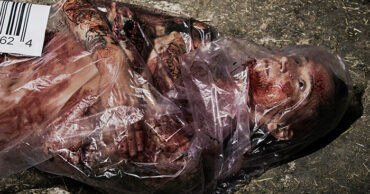Sherlock Holmes’ death has been a controversial topic in both the original texts by Arthur Conan Doyle and in the BBC series. The book character was initially killed off by Doyle who became worried he was focusing too much of his energy on a single character. However, Sherlock’s death was not received well by his fans, and Doyle was forced to bring the character back to life. Though the BBC was largely faithful to Doyle’s works, several changes were made to include modern elements to the story. But how much the character’s death was altered from book to screen?
Like some TV shows that are based on literary works, there are notable differences regarding Sherlock’s death. In the 1893 novel, The Final Problem, Holmes brawled with Moriarty near a cliff of a waterfall in Switzerland and fell to his “death.” Though, the book inspired the episode “The Reichenbach Fall”, the creators of the show put a modern twist on it and delivered a very different death for Sherlock, starting with where he fell.
How The Final Problem Changed for BBC’s Sherlock

Much of what Sherlock offers is a captivating TV series that puts a modern twist on Arthur Conan Doyle’s stories. Beyond the inclusion of modern technology, the series tweaked the personalities and motives of the characters as well. As a result, overall, the BBC successfully adapted the more-than-a-century-old manuscripts for modern entertainment. However, regarding The Final Problem and “The Reichenbach fall” specifically, the location of Sherlock’s death was altered as well.
“The Reichenbach Fall” trades in a brawl by the waterfall for an ultimatum atop a hospital. The action-packed episode not only sees Moriarty seemingly take his own life but he also forces Sherlock to commit suicide in exchange for the safety of those dearest to the titular hero. Out of options, and in a wild twist for the series, Sherlock jumps off the hospital building to John’s dismay. Thought it is ultimately revealed that both Sherlock and Moriarty faked their deaths, there is no denying that “The Reichenbach Fall” delivered one of the most important television moments of the early 2010s.
Why Sherlock’s Reichenbach Fall Story is Different From the Books

Sherlock’s fake death is a big part of the character’s story in the books and it makes perfect sense for the TV series to want to include such a pivotal moment in the character’s journey. However, the reasons for both deaths are very different, allowing for varied impacts on the story and audience. As earlier mentioned, Doyle killed off Sherlock in the books in the pursuit of versatility, while Sherlock’s death in the series was plot device needed to move story along and was presented as the only way the detective could stop Moriarty. In other words, Sherlock was killed off the in books as a form of necessity while he was killed in the show for sensationalism. Ultimately, the sensation reached a height the series could not recover from.
Sherlock’s relatively simple death in the book allowed for a believable comeback, while the extravagant explanation given as to how Sherlock was able to fake his death and survive his leap off a building, in front of witnesses, simply did not hold up. So while Sherlock’s popularity remained after the character was resurrected in the books, the same cannot be said the Sherlock Holmes series which saw a notable decline in quality and viewership afterwards.
READ NEXT: Sherlock Holmes Spin-Off Shows Are Coming To HBO Max
 Follow Us
Follow Us





